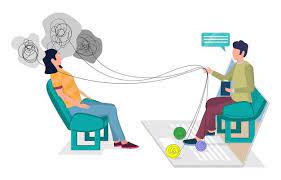In the intricate landscape of mental health treatments, Cognitive Behavioral Therapy (CBT) stands as a beacon of empirically validated efficacy.
Its transformative power lies in the synergy between cognitive restructuring and behavioral modification techniques.
As we delve into the depths of CBT, we unravel the mechanisms that underpin its effectiveness in alleviating a myriad of psychological distresses.
Foundations of Cognitive Behavioral Therapy
At its core, CBT operates on the principle that our thoughts, emotions, and behaviors are interconnected, and altering one component can lead to cascading changes in others.
This paradigm shift from viewing psychological distress as solely stemming from past experiences to understanding it as a product of current perceptions and behaviors lays the groundwork for therapeutic intervention.
Cognitive Restructuring
Central to CBT is the process of cognitive restructuring, which involves identifying and challenging maladaptive thought patterns.
This begins with cognitive awareness, where individuals learn to recognize automatic negative thoughts (ANTs) that contribute to their distress. Through collaborative exploration with the therapist, clients dissect these thoughts, examining their validity and accuracy.
The next step entails replacing distorted cognitions with more balanced and realistic alternatives. Techniques such as cognitive reframing empower individuals to reinterpret situations in a less detrimental light, fostering resilience and adaptive coping strategies.
Over time, this iterative process cultivates a cognitive repertoire characterized by flexibility and accuracy, enabling individuals to navigate life’s challenges with greater ease.
Behavioral Modification
Complementing cognitive restructuring, behavioral modification techniques serve as the catalyst for tangible change. By targeting maladaptive behaviors that reinforce negative thought patterns, CBT empowers individuals to cultivate healthier coping mechanisms.
This may involve behavioral experiments, where clients test the validity of their beliefs through real-world experiences, fostering adaptive behavioral responses.
Furthermore, the principles of operant conditioning come into play, wherein desirable behaviors are reinforced through positive reinforcement, while undesirable behaviors are extinguished through techniques such as exposure therapy.
Through systematic desensitization, individuals confront feared stimuli in a gradual and controlled manner, dismantling the barriers that impede their emotional well-being.
Integration and Maintenance
As cognitive restructuring and behavioral modification intertwine, clients experience a synergistic transformation that extends beyond the confines of therapy sessions.
With newfound insight and skills, individuals are equipped to navigate the complexities of daily life with resilience and efficacy. Moreover, CBT emphasizes the cultivation of relapse prevention strategies, empowering clients to anticipate and effectively manage setbacks.
The therapeutic alliance between client and therapist serves as the cornerstone of CBT, providing a supportive environment conducive to growth and exploration.
Through collaborative goal-setting and ongoing feedback, therapists tailor interventions to suit the unique needs and circumstances of each individual, fostering a sense of agency and empowerment.
Applications Across Disorders
The versatility of CBT renders it applicable across a spectrum of psychological disorders, ranging from anxiety and depression to substance abuse and eating disorders.
Its evidence-based approach transcends diagnostic boundaries, offering a framework for addressing the underlying cognitive and behavioral mechanisms that perpetuate distress.
In the realm of anxiety disorders, CBT equips individuals with tools to challenge catastrophic thinking patterns and gradually confront feared stimuli, thereby reclaiming control over their lives.
Similarly, in the context of depression, CBT targets the negative cognitive triad of self, world, and future, fostering a more balanced perspective and reinstating hope and purpose.
Conclusion
As we navigate the intricacies of mental health treatment, Cognitive Behavioral Therapy emerges as a beacon of efficacy and empowerment. Through the symbiotic interplay of cognitive restructuring and behavioral modification, individuals embark on a journey of self-discovery and transformation.
Armed with newfound skills and resilience, they traverse the terrain of psychological distress with confidence and vitality, embodying the essence of cognitive-behavioral healing.

